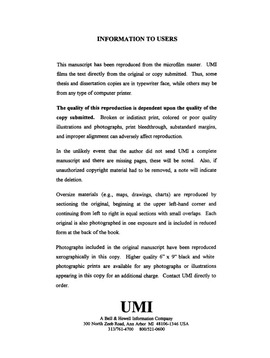| dc.contributor.advisor | Hopkins, Penny M., | en_US |
| dc.contributor.author | Chung, Chi-kong Arthur. | en_US |
| dc.date.accessioned | 2013-08-16T12:30:06Z | |
| dc.date.available | 2013-08-16T12:30:06Z | |
| dc.date.issued | 1998 | en_US |
| dc.identifier.uri | https://hdl.handle.net/11244/5666 | |
| dc.description.abstract | Ecdysteroids are the arthropod molting hormones that control molting and limb regeneration in crustaceans. The actions of ecdysteroids are mediated through their nuclear receptor, ecdysteroid receptor (EcR). Studies in insect EcRs show the EcR needs to dimerize with ultraspiracle (USP) protein, an insect homolog of retinoid-X receptor (RXR), before it becomes a functional receptor. The deduced amino acid sequence of Uca EcR (UpuEcR) resembles insect EcRs within both the DNA binding domain (DBD) and ligand binding domain (LBD). The amino acid sequence of the DBD of Uca RXR (UpuRXR) shares greatest identity to insect USPs while the sequence of LDB is more similar to vertebrate RXRs. Regenerating limb buds, gills, eyestalks, hepatopancreas, hypodermis, and muscle from non-regenerating walking legs and the large cheliped express both receptor transcripts and they may represent the ecdysteroid target tissues. During the molt cycle, UpuEcR transcript levels show marked variation between tissues, indicating differences in the potential to respond to ecdysteroids. Furthermore, there is no correlation between high levels of UpuEcR transcripts in some tissues and total ecdysteroid titers, suggesting that UpuEcR expression in these tissues is not dependent on high ecdysteroid titers. Immersion of the crabs in the sea water containing all-trans retinoic acid (RA) elevates the steady-state concentrations of UpuRXR transcript and alters the pattern of circulating ecdysteroids. These changes may correlate with the disruptive effects of RA on limb regeneration. Removal of half of the limb buds during basal growth decreases the growth rate of the primarily regenerating limb buds in U. pugilator, but does not affect the total ecdysteroid titers initially, suggesting that the decrease of growth rate in the primarily regenerating limb buds is not dependent on the drop of total ecdysteroid titers. Levels of both UpuEcR and UpuRXR transcripts are higher in secondarily regenerating buds than in the primarily regenerating buds during fast proecdysial growth of the secondarily regenerating buds. The increase of UpuEcR transcript levels may correspond to the growth rate of proecdysial buds. Results from phylogenetic analyses suggest that the ligand binding ability of EcRs and USPs may have been acquired independently during the arthropod evolution. | en_US |
| dc.format.extent | xx, 207 leaves : | en_US |
| dc.subject | Crustacea Phylogeny. | en_US |
| dc.subject | Ecdysteroids Receptors. | en_US |
| dc.subject | Biology, Molecular. | en_US |
| dc.subject | Biology, Genetics. | en_US |
| dc.subject | Biology, Zoology. | en_US |
| dc.title | Crustacean hormone nuclear receptors: Characterization, gene expression, and evolution. | en_US |
| dc.type | Thesis | en_US |
| dc.thesis.degree | Ph.D. | en_US |
| dc.thesis.degreeDiscipline | Department of Biology | en_US |
| dc.note | Source: Dissertation Abstracts International, Volume: 59-07, Section: B, page: 3286. | en_US |
| dc.note | Adviser: Penny M. Hopkins. | en_US |
| ou.identifier | (UMI)AAI9839800 | en_US |
| ou.group | College of Arts and Sciences::Department of Biology | |
